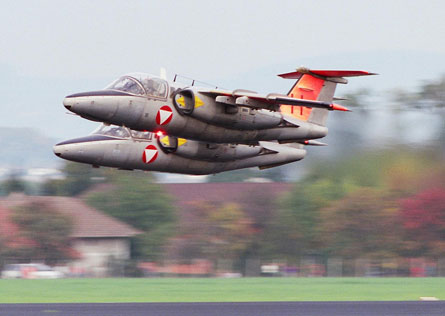Austria expects to make a decision on its future advanced jet trainer strategy in late August, with options including a limited avionics upgrade to its Saab 105s, replacement equipment such as the Alenia Aermacchi M-346 and BAE Systems Hawk, or interim access to Northrop F-5s.
Although it is a member of the multinational Advanced European Jet Pilot Training initiative, Austria intends to retain its own AJTs to operate beneath its eventual fleet of 15 Eurofighter Typhoons.
This stems from the need to download some training activities from the fighter, and to retain a secondary armed air policing capability in the event that the nation ever has to ground its Typhoons.
"It is an absolute must for us to have our own aircraft," says Col Roman Horak from the Austrian defence ministry's training directorate. "The investment in the training aircraft should save a lot of money," he adds.
"We believe that the minimum number on the flightline should be six," says Horak, who notes that "a contract should not be later than 2012." A turboprop solution has already been discounted, as "in the opinion of our personnel, you cannot compare the [Pilatus] PC-21 to any of those AJTs, in terms of the feeling and procedures," he says.
Vienna has already ceased using the F-5 as a lead-in fighter trainer, and signed an interim agreement to send two students a year to use the NATO Flying Training in Canada system.
The delayed AEJPT programme, which could deliver a pooled fleet of new training aircraft to achieve initial operating capability from 2015, recently received a significant boost, with all participants having signed a memorandum of understanding to advance the project.
 |
|---|
© BMLV-HBF |
Austria's fleet of 28 Saab 105s (above) is meanwhile showing the signs of the design's age, with as few as six or eight sometimes available on any one day. "Very soon we will have to have a training system for new, young pilots: that has not yet been solved," says Horak.
Source: Flight International



















